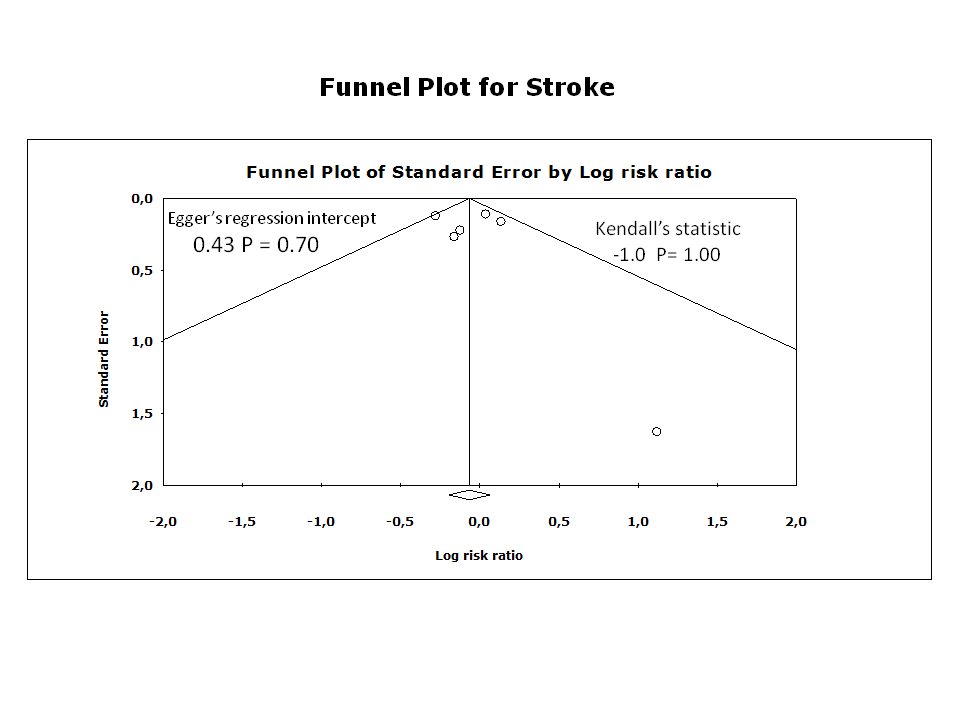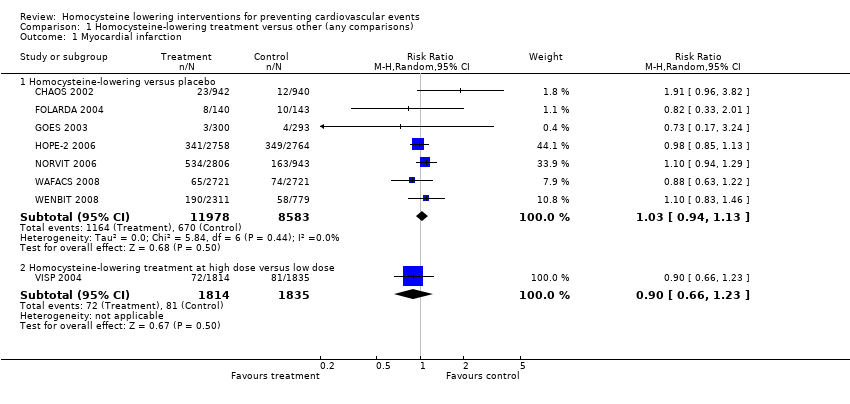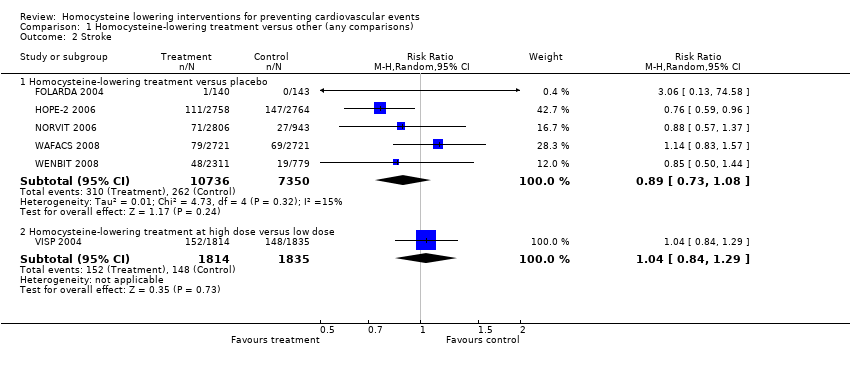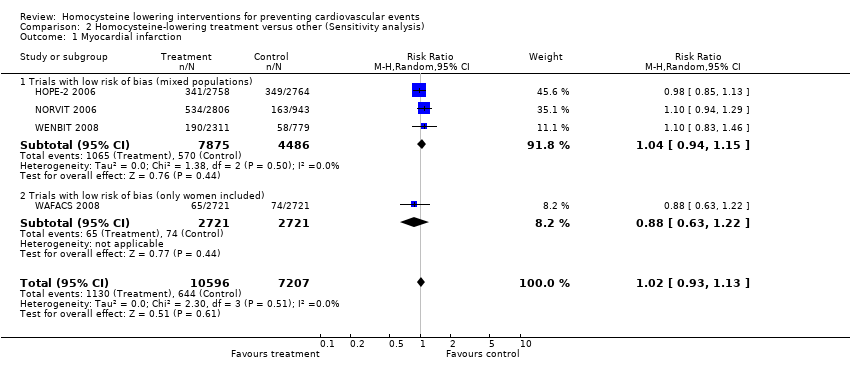| Study | Year | MI | Stroke | Unstable angina | Death | Notes | |
| CHAOS‐2 | 2002 | Not available. | Not evaluated in this study. | Not evaluated in this study. | Not available. | | |
| FOLARDA | 2004 | Creatinine kinase elevation at least two times the upper limit of normal and in addition one of the following: On EKG, new pathological Q‐waves in at least two contiguous leads or new left bundle branch block or chest pain longer than 30 min. | Unequivocal signs of focal or global neurological deficit with sudden onset was present with a duration greater than 24 h and which were judged to be vascular in origin. | Recurrence of typical or atypical anginal pain at rest or at effort with the appearance of a ST segment change >0.1mV and/or T wave inversion in at least 2 of 12 leads. | Not available. | | |
| GOES | 2003 | Two out of three criteria should be positive: chest pain lasting _30 min, creatine kinase elevation _2 times the upper limit of normal or new pathological Q waves of 0.04‐s duration or 25% of the corresponding R‐wave amplitude, both in at least two contiguous leads. | Not available. | Not available. | Not available. | | |
| HOPE‐2 | 2006 | Two of the following three criteria were met: typical symptoms, increased cardiac‐enzyme levels, and diagnostic electrocardiographic changes$. | Focal neurologic deficit lasting more than 24 hours. Computed tomography or magnetic resonance imaging was recommended to identify the type of stroke (ischaemic or hemorrhagic). When these tools were not available, the stroke was classified as of uncertain type. | Not available. | Cardiovascular causes were unexpected deaths presumed to be due to ischaemic cardiovascular disease and occurring within 24 hours after the onset of symptoms
without clinical or postmortem evidence of another cause, deaths from myocardial infarction or stroke within 7 days after the event, deaths associated with cardiovascular interventions within 30 days after cardiovascular surgery or within 7 days after percutaneous interventions, and deaths from congestive heart failure, arrhythmia, pulmonary embolism, or ruptured aortic aneurysm. Deaths from uncertain causes were presumed to be due to cardiovascular causes. | $ Alpert JS, Thygesen K, Antman E, Bassand JP. Myocardial infarction redefined ‐ a consensus document of the joint European Society of Cardiology/American College of Cardiology Committee for the
redefinition of myocardial infarction. J Am Coll Cardiol 2000;36:959‐69. [Erratum, J Am Coll Cardiol 2001;37:973.]
: source not available. | |
| NORVIT | 2006 | See supplementary appendix: www.nejm.org | See supplementary appendix: www.nejm.org | See supplementary appendix: www.nejm.org | See supplementary appendix: www.nejm.org | Definitions are very longer to resume here. | |
| VISP | 2004 | New ECG changes including Q waves or marked ST‐T changes plus abnormal cardiac enzymes, cardiac symptoms plus abnormal enzymes, or symptoms plus hyperacute ECG changes resolving with thrombolysis. | Evidence of sudden onset of focal neurologic deficit lasting at least 24 hours accompanied by an increased NIHSS Score in an area that was previously normal. When the sudden onset of symptoms lasting at least 24 hours was not accompanied by an increased NIHSS Score in an area that was previously normal, then recurrent stroke was diagnosed using cranial CT or MRI evidence of new infarction consistent with the clinical presentation. | Not available. | Not available. | | |
| WAFACS | 2008 | According to World Health Organizations's criteria. | A new neurologic deficit of sudden onset that persisted for more than 24 jours or until death within 24 hours. | Not available. | Due to cardiovascular disease was confirmed by examinations of autopsy reports, death certificates, medical records, and information obtained from the next kin or other family members. Death from any cause was confirmed by the end point committee on the basis of a death certificate. | | |
| WENBIT | 2008 | According to The Joint European Society of Cardiology/American College of Cardiology Committee. Eur Heart J. 2000;21:1502‐13. | According to Cannon CP, Battler A, Brindis RG, Cox JL, Ellis SG, Every NR et al. A report of the American College of Cardiology Task Force on Clinical Data Standards (Acute Coronary Syndromes Writing Committee). J Am Coll Cardiol. 2001;38:2114‐30. | According to Cannon CP, Battler A, Brindis RG, Cox JL, Ellis SG, Every NR et al. A report of the American College of Cardiology Task Force on Clinical Data Standards (Acute Coronary Syndromes Writing Committee). J Am Coll Cardiol. 2001; 38:2114‐30. | If death occurred within 28 days
after the onset of an event, the event
was classified as fatal. | | |

















